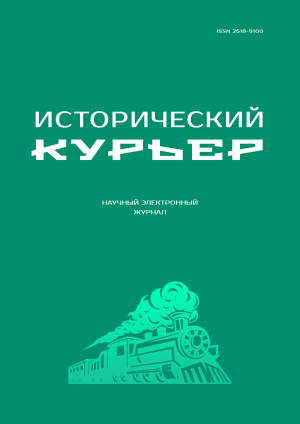Historians explore society and its activities in all forms and aspects, but there are topics that rarely attract attention due to their specificity. One of them is mortality. In many ways, F. Arjes put an end to this in his famous book “Man in the Face of Death”, showing not only that it is necessary to speak on difficult topics, but also how this can be done. No wonder our issue opens with an article by V.G. Semenova and S.A. Vangorodskaya “Perception of death as a measure of the value of life against the background of epidemiological transition”, analyzing the works of F. Arjes and proposing to compare them with the works of another, no less significant scientist, A. Omran. It perfectly reflects the idea underlying this issue.
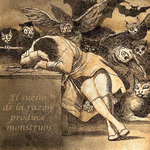 Mortality of the Population of Russia
Mortality of the Population of Russia
V.G. Semenova, S.A. Vangorodskaya
Perception of Death as a Measure of the Value of Life against the Backdrop of the Epidemiological Transition
The article on the basis of comparing the historical periodization of the perception of the death of F. Arjes with the main stages of the epidemiological transition of A. Omran considers the problem of the perception of death as a mirror reflection of the value of life. It was concluded that the general vector of the evolution of the perception of death can be considered its personification, and the attitude to human life as one of the highest values was finally formed at the final stages of the epidemiological transition, when mortality from a huge range of pathologies was attributed to preventable by the forces of medicine and health.
Publishing: 28/06/2024
How to cite: Semenova V.G., Vangorodskaya S.A. Perception of Death as a Measure of the Value of Life against the Backdrop of the Epidemiological Transition // Historical Courier, 2024, No. 3 (35), pp. 11–23. [Available online: http://istkurier.ru/data/2024/ISTKURIER-2024-1-01.pdf]
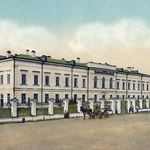 Mortality of the Population of Russia
Mortality of the Population of Russia
I.L. Dameshek, I.V. Orlova
Child Mortality in the Irkutsk Province in the 19th – Early 20th Centuries: Medical and Historical Analysis of the Problem
At the present stage of the development of society, an urgent task is to provide demographic processes with favorable indicators: an increase in life expectancy, a decrease in morbidity and mortality, and an improvement in the quality characteristics of the health of the population. In general, the analysis of the demographic situation is determined by the statistics of births, mortality, population growth, fertility, infant mortality, its structure by causes, gender, age, etc. In this article, the authors analyze the problem of child mortality and the reasons for its permanent existence in the Irkutsk province in the 19th – early 20th centuries, consider in detail the presence of an infectious component in the region and the features of childcare, the level of medical care.
Publishing: 28/06/2024
How to cite: Dameshek I.L., Orlova I.V. Child Mortality in the Irkutsk Province in the 19th – Early 20th Centuries: Medical and Historical Analysis of the Problem // Historical Courier, 2024, No. 3 (35), pp. 24–40. [Available online: http://istkurier.ru/data/2024/ISTKURIER-2024-1-02.pdf]
 Mortality of the Population of Russia
Mortality of the Population of Russia
N.V. Chernysheva, A.I. Azhigulova
Mortality of the Population of Soviet Russia in the 1920–1930s: Main Research Problems, Factors and Trends
An important indicator of population reproduction is mortality. Mortality, its factors, and trends were decisive in the processes of population reproduction in Soviet Russia in the 1920s–1930s. As before, exogenous causes of mortality dominated over endogenous ones, and the emerging demographic transition was again interrupted by political and foreign policy events, as well as socio-economic processes. State measures aimed at reducing the mortality rate and supporting a high birth rate by expanding the network of medical institutions, accessibility to medical care and other opportunities were catching up.
Publishing: 28/06/2024
How to cite: Chernysheva N.V., Azhigulova A.I. Mortality of the Population of Soviet Russia in the 1920–1930s: Main Research Problems, Factors and Trends // Historical Courier, 2024, No. 3 (35), pp. 41–53. [Available online: http://istkurier.ru/data/2024/ISTKURIER-2024-1-03.pdf]
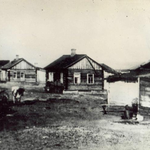 Mortality of the Population of Russia
Mortality of the Population of Russia
V.A. Kyshpanakov
Mortality Trends of Population of Khakassia (1920s – Early 1990s)
The article analyzed the dynamics of mortality and its causes in Khakassia during the Soviet historical period. As a result of the general processes of modernization of the economy and social sphere in Khakassia, the population has increased many times, a relatively developed health care system has been formed. All this accelerated the passage of the stages of the epidemiological transition. However, in terms of average life expectancy, Khakassia, like the Soviet Union, significantly lagged behind the advanced countries. By the end of the era of the USSR, this gap in the pace of epidemiological transition increased even more.
Publishing: 28/06/2024
How to cite: Kyshpanakov V.A. Mortality Trends of Population of Khakassia (1920s – Early 1990s) // Historical Courier, 2024, No. 3 (35), pp. 54–69. [Available online: http://istkurier.ru/data/2024/ISTKURIER-2024-1-04.pdf]
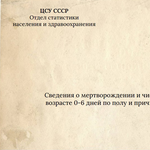 Mortality of the Population of Russia
Mortality of the Population of Russia
E.I. Semykin
Differences in the Dynamics and Structure of Causes of Mortality in Neonatal and Post-Neonatal Neonatal Infants in the Krasnoyarsk Territory in the Late 1950s – mid 1980s
The article analyzes quantitative data on infant mortality in the neonatal and post-neonatal periods, the ratio of mortality in these age groups, the structure of causes of death, and compares the data obtained. As a result, the initial hypothesis about significant differences in the epidemiological processes occurring in the age groups of infants of the neonatal and post-neonatal periods of life was confirmed: differences in the dynamics of recorded deaths and the different structure of mortality and its changes were established.
The article was completed on the topic of the state assignment “Socio-Economic Potential of the Eastern Regions of Russia in the 20th – Early 21st Centuries: Management Strategies and Practices, Dynamics, Geopolitical Context” (FWZM-2024-0005).
Publishing: 28/06/2024
How to cite: Semykin E.I. Differences in the Dynamics and Structure of Causes of Mortality in Neonatal and Post-Neonatal Neonatal Infants in the Krasnoyarsk Territory in the Late 1950s – mid 1980s // Historical Courier, 2024, No. 3 (35), pp. 70–81. [Available online: http://istkurier.ru/data/2024/ISTKURIER-2024-1-05.pdf]
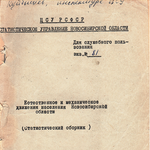 Mortality of the Population of Russia
Mortality of the Population of Russia
A.A. Burmatov
Official Statistics on Mortality in Western Siberia in the 1960s: The Way to the Truth
The article deals with the evolution of population mortality in Western Siberia in 1959–1970. On the basis of published and unpublished statistical materials the main features of mortality of the population of one of the most economically important regions of the Russian Federation are analyzed. Based on the analysis of statistical materials, the following conclusions are made. The populaсe of Western Siberia followed the path of evolution in mortality that another regions of the country followed. In the late 1960s, the rise in mortality began earlier than in the RSFSR as a whole. The increase in mortality occurred faster than in other regions and began with a lower level of life expectancy than in the USSR.
Publishing: 28/06/2024
How to cite: Burmatov A.А. Official Statistics on Mortality in Western Siberia in the 1960s: The Way to the Truth // Historical Courier, 2024, No. 3 (35), pp. 82–92. [Available online: http://istkurier.ru/data/2024/ISTKURIER-2024-1-06.pdf]
 Mortality of the Population of Russia
Mortality of the Population of Russia
N.A. Aralovets
The Main Classes of Causes of Death of the Population of the RSFSR in the 1970s and 1980s
The article, based on archival and published data, studies the impact of endogenous, quasi-endogenous and exogenous factors on the increase in the 1970-1980s. mortality of the population of the RSFSR from modern diseases of the circulatory system, malignant neoplasms, accidents, poisoning and injuries. It is these diseases, not traditional ones, that have become the leading causes of death in the population. This phenomenon corresponded to the epidemiological transition and the spread of a new type of mortality. Modern diseases increased the mortality rate, especially of the male population, including those of working age.
Publishing: 28/06/2024
How to cite: Aralovets N.A. The Main Classes of Causes of Death of the Population of the RSFSR in the 1970s and 1980s // Historical Courier, 2024, No. 3 (35), pp. 93–102. [Available online: http://istkurier.ru/data/2024/ISTKURIER-2024-1-07.pdf]
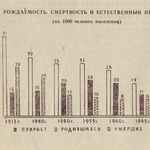 Mortality of the Population of Russia
Mortality of the Population of Russia
O.B. Dashinamzhilov
Fertility and Mortality of the Urban Population of the Tyumen Region at the End of the Soviet Period (1979–1989)
The article examines the change in fertility and mortality rates in urban settlements of the Tyumen region in the 1980s. The analysis of population reproduction is based on the total fertility rate and life expectancy, taking into account the social changes that occurred at that time. The theoretical basis of the work was the theory of demographic transition. It was found that by the end of the study period, mortality became the lowest among the West Siberian regions, while the region retained its leading position in terms of fertility.
The article was carried out within the framework of the state task of the Ministry of Science and Higher Education of the Russian Federation “Socio-Economic Potential of the Eastern Regions of Russia in the 20th – Early 21st Centuries Management Strategies and Practices, Dynamics, Geopolitical Context” (FWZM-2024-0005).
Publishing: 28/06/2024
How to cite: Dashinamzhilov O.B. Fertility and Mortality of the Urban Population of the Tyumen Region at the End of the Soviet Period (1979–1989) // Historical Courier, 2024, No. 3 (35), pp. 103–112. [Available online: http://istkurier.ru/data/2024/ISTKURIER-2024-1-08.pdf]
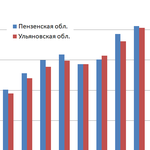 Mortality of the Population of Russia
Mortality of the Population of Russia
A.S. Bushuev
Mortality Rate of the Population of the Penza and Ulyanovsk Regions in 1990–2010
The article analyzes the features of the dynamics and structure of mortality in the 1990-2000s two regions of the Middle Volga region – Penza and Ulyanovsk regions. Mortality rates are considered by the author by place of residence, age and sex differences. Much attention is paid to the study of the mortality structure of the population in accordance with the current International Classification of Diseases (ICD-10). The influence of different causes of death in the structure of mortality of the population in the city and in the countryside is shown, general trends and regional specifics of the dynamics of mortality of the population are revealed.
Publishing: 28/06/2024
How to cite: Bushuev A.S. Mortality Rate of the Population of the Penza and Ulyanovsk Regions in 1990–2010 // Historical Courier, 2024, No. 3 (35), pp. 113–126. [Available online: http://istkurier.ru/data/2024/ISTKURIER-2024-1-09.pdf]
 Mortality of the Population of Russia
Mortality of the Population of Russia
L.N. Slavina
Mortality of Rural Residents of the Krasnoyarsk Territory in Post-Soviet Times (1990–2023s) (Causes and Regional Characteristics)
The problem of the development of mortality in Russia in the post-Soviet era, the nature and degree of influence on it of the radical reforms of the 1990-2020s are considered on the example of the rural population of the Krasnoyarsk Territory. The processes in the villages went in common with similar ones in the cities of the region and the countryside of the Russian Federation as a whole, but more dynamically, and had the worst parameters. Mortality trends in the Krasnoyarsk village after 1991 are assessed as crisis. In 2020, the slow recovery from the crisis was interrupted by the COVID-19 pandemic. The Krasnoyarsk village suffered more severe losses from the pandemic than the cities of the region and all of rural Russia.
Publishing: 28/06/2024
How to cite: Slavina L.N. Mortality of Rural Residents of the Krasnoyarsk Territory in Post-Soviet Times (1990–2023s) (Causes and Regional Characteristics) // Historical Courier, 2024, No. 3 (35), pp. 127–141. [Available online: http://istkurier.ru/data/2024/ISTKURIER-2024-1-10.pdf]
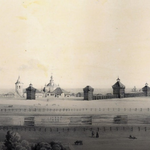 Health Conservation in Russia
Health Conservation in Russia
A.D. Vasilev
Organization of Smallpox Vaccination in the Yakut Region (First Half of the 19th Century)
The article is devoted to the history of the formation and development of the system for the prevention of infectious diseases in the Yakutsk region in the first half of the 19th century. Based on clerical sources (decrees, prescriptions, reports, correspondence, statements, annual reports of regional chiefs), mass vaccination in the vast north-eastern periphery of the empire was first considered, the activities of the local administration in organizing this policy were analyzed and its difficulties were identified in the context of the specificity of the region. The author comes to the conclusion that, despite the observed organizational troubles, the measures taken contributed to the creation of anti-epidemic conditions in Yakutia.
The work was supported by the RSF within the framework of scientific research “The fight against epidemics in the Yakut Region in the 19th Century: The Formation of Social Policy on the Outskirts of Asian Russia”, project no. 24-28-20392.
Publishing: 28/06/2024
How to cite: Vasilev A.D. Organization of Smallpox Vaccination in the Yakut Region (First Half of the 19th Century) // Historical Courier, 2024, No. 3 (35), pp. 142–153. [Available online: http://istkurier.ru/data/2024/ISTKURIER-2024-1-11.pdf]
 Health Conservation in Russia
Health Conservation in Russia
V.A. Zverev, E.S. Lanovaya
Sanitary Culture of the Rural Population of Western Siberia in the Second Half of the 19th – Early 20th Centuries: Modern Russian Historiography of the Topic
The article characterizes those options for studying the sanitary culture of the Russian rural population of Western Siberia during the end of the empire, which gave the most productive results. It has been established that this topic is now being fruitfully developed in several problem-themed areas by representatives of ethnography, sociocultural history, the history of folk medicine and sanitation, health care and health education. In the works of a number of scientists, a combination of these variations is observed. Some discussion issues emerged.
Publishing: 28/06/2024
How to cite: Zverev V.A., Lanovaya E.S. Sanitary Culture of the Rural Population of Western Siberia in the Second Half of the 19th – Early 20th Centuries: Modern Russian Historiography of the Topic // Historical Courier, 2024, No. 3 (35), pp. 155–170. [Available online: http://istkurier.ru/data/2024/ISTKURIER-2024-1-12.pdf]
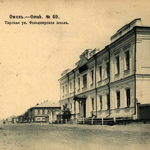 Health Conservation in Russia
Health Conservation in Russia
I.I. Ponomarev
Health Care of the Population of the Siberian Cossack Army in the 2nd Half of the 19th – Early 20th Century: Historical and Demographic Aspect
The purpose of the work is to identify the peculiarities of the health-preserving behavior of the population of the Siberian Cossack army (Cossacks and representatives of other classes) and the organization of medical care on military territory at the end of the imperial period. The works of historians are characterized, which reflected certain aspects of the organization of health care in the army. A conclusion was made about the positive consequences of some improvement in the health care system on the territory of the Siberian Cossack army (reduced mortality, earlier detection of diseases, especially among representatives of the Cossacks, increased confidence among the Cossacks in official medicine).
Publishing: 28/06/2024
How to cite: Ponomarev I.I. Health Care of the Population of the Siberian Cossack Army in the 2nd Half of the 19th – Early 20th Century: Historical and Demographic Aspect // Historical Courier, 2024, No. 3 (35), pp. 171–181. [Available online: http://istkurier.ru/data/2024/ISTKURIER-2024-1-13.pdf]
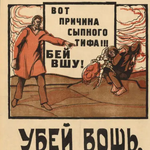 Health Conservation in Russia
Health Conservation in Russia
V.A. Shalamov
Some Causes and Ways of Spreading the Epidemic of Typhus in Siberia During the Civil War (1918–1920)
The work examines various causes of typhus and its distribution in Siberia during the civil war. The author supports the opinion that typhus was brought from territories controlled by the Soviet government, where this disease was widespread. Several social strata could act as carriers on Siberian soil, which were in close contact with the population living under the rule of the Bolsheviks – refugees, Russian repatriated prisoners of war, and servicemen of the Kolchak army.
Publishing: 28/06/2024
How to cite: Shalamov V.A. Some Causes and Ways of Spreading the Epidemic of Typhus in Siberia During the Civil War (1918–1920) // Historical Courier, 2024, No. 3 (35), pp. 182–193. [Available online: http://istkurier.ru/data/2024/ISTKURIER-2024-1-14.pdf]
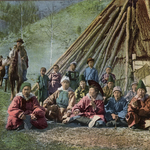 Health Conservation in Russia
Health Conservation in Russia
O.A. Goncharova, N.N. Lozhkina
Organising Epidemic Disease Control in Gorny Altai in 1920s
In 21th century the history of organisation of control over popular epidemics is given a new relevant meaning. Russia has already got successful experience to overcome epidemics in conditions of a war, isolation and lack of both medicine and medical staff. The paper reconstructs the work on the epidemic control in Gorny Altai during the Russian Civil War and the introduction of first reforms of the Soviet power. The research restores the picture of disease incidence and the spread of infectious diseases with the help of the archive materials. The authors reveal ways and forms to bring down and prevent the development of epidemics.
Publishing: 28/06/2024
How to cite: Goncharova O.A., Lozhkina N.N. Organising Epidemic Disease Control in Gorny Altai in 1920s // Historical Courier, 2024, No. 3 (35), pp. 197–207. [Available online: http://istkurier.ru/data/2024/ISTKURIER-2024-1-15.pdf]
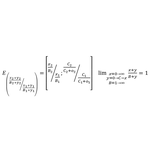 Health Conservation in Russia
Health Conservation in Russia
M.A. Semenov
The Method of Quantitative Analysis of the Impact of the Quality of Medical Activities of Healthcare on the Mortality of the Population During the Great Patriotic War
The article proposes a method that allows, in conditions of lack of statistical data, to establish the role of the contribution of changes in the quality of medical health care to changes in mortality. Using the proposed method, based on data from Western Siberia, it was established that the impact of the quality of medical activity on a radical reduction in mortality in the middle of the war was relatively small. On the basis of data on the RSFSR, it was found that a smooth decrease in mortality at the end of the war, on the contrary, was primarily due to an improvement in the quality of medical activity.
The article was completed on the topic of the state assignment “Socio-Economic Potential of the Eastern Regions of Russia in the 20th – Early 21st Centuries: Management Strategies and Practices, Dynamics, Geopolitical Context” (FWZM-2024-0005).
Publishing: 28/06/2024
How to cite: Semenov M.A. The Method of Quantitative Analysis of the Impact of the Quality of Medical Activities of Healthcare on the Mortality of the Population During the Great Patriotic War // Historical Courier, 2024, No. 3 (35), pp. 208–222. [Available online: http://istkurier.ru/data/2024/ISTKURIER-2024-1-16.pdf]
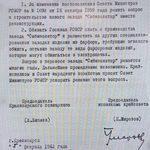 Health Conservation in Russia
Health Conservation in Russia
A.A. Ruban
Development of the Health Care System in the Documents of the Executive Committee of the Krasnoyarsk Council of Workers Deputies in 1960–1968
The article is based on the documents of the Executive Committee of the Krasnoyarsk Regional Council of Workers Deputies from 1960 to 1968. The materials of the cases characterise the development of the health care system in Krasnoyarsk region in the conditions of epidemiological transition. The construction, personnel, fight against infectious diseases, measures to combat “diseases of civilisation”, traumatism, ecology are analysed. Conclusions are drawn about the timeliness and effectiveness of the Kray Executive Committee’s measures to combat diseases in this period.
Publishing: 28/06/2024
How to cite: Ruban А.А. Development of the Health Care System in the Documents of the Executive Committee of the Krasnoyarsk Council of Workers Deputies in 1960–1968 // Historical Courier, 2024, No. 3 (35), pp. 223–233. [Available online: http://istkurier.ru/data/2024/ISTKURIER-2024-1-17.pdf]
 Debating Club
Debating Club
M.I. Azambuja
What if the Russian Demographic Crisis Had a Hidden Ecologic Cause?
Russia death rates decline during the 1950s, rose from the mid-1960s until the early 2000s before declining slightly again after 2004. The trends have been attributed to economic trends and prospects, and alcohol consumption. Not-disregarding a contribution of social factors, a new idea is proposed here: that the observed trends in mortality (and fertility) could have resulted from an ecologic interplay between two populations: humans and influenza A viruses. It is proposed that the immune-inflammatory phenotype emerging from the interaction between early priming and re-infection by influenza A subtypes may be protective (if same subtype) or enhancer (if different subtypes) of morbidity upon challenges by other environmental exposures.
Publishing: 28/06/2024
How to cite: Azambuja M.I. What if the Russian Demographic Crisis Had a Hidden Ecologic Cause? // Historical Courier, 2024, No. 3 (35), pp. 234–246. [Available online: http://istkurier.ru/data/2024/ISTKURIER-2024-1-18.pdf]
 Debating Club
Debating Club
N.V. Gonina, N.Y. Zamyatina, A.Y. Volodin, A.E. Ivanova
Discussion of M.I. Azambuya’s Article “What if the Demographic Crisis in Russia Has a Hidden Environmental Cause?”
The history of epidemics has been studied for more than 100 years. Doctors and epidemiologists have been and are constantly engaged in it, because epidemics have always accompanied humanity, and fighting them is the key to its survival not only in the past, but also in the present and in the future. If we turn to foreign scientific literature, we can see that in the 2000s. A well-founded interdisciplinary approach to the study of the topic has developed, including a deep dive into the history of the issue, attracting a large volume of retrospective statistical data, combining advanced knowledge of medicine, genetics, demography using modern information processing methods. One of these works is an article by Maria Ines Azambuya, which examines the impact of influenza epidemics on humans from the neonatal period to death.
The article was completed on the topic of the state assignment “Socio-Economic Potential of the Eastern Regions of Russia in the 20th – Early 21st Centuries: Management Strategies and Practices, Dynamics, Geopolitical Context” (FWZM-2024-0005).
Publishing: 28/06/2024
How to cite: Gonina N.V., Zamyatina N.Y., Volodin A.Y., Ivanova A.E. Discussion of M.I. Azambuya’s Article “What if the Demographic Crisis in Russia Has a Hidden Environmental Cause?” // Historical Courier, 2024, No. 3 (35), pp. 247–251. [Available online: http://istkurier.ru/data/2024/ISTKURIER-2024-1-19.pdf]
 In the First Person
In the First Person
E.N. Tumanik
“If You Only Knew How Peaceful I am, How Blessed I am”: The Christian Death of Princess N.V. Shakhovskaya in Rome on December 10/22, 1847
The article features a letter from Princess E.M. Shakhovskaya to N.N. Sheremeteva. The letter relates to a tragic moment in the life of the family of Prince V.M. Shakhovskoy, well-known in the 19th century: the untimely passing of his daughter Natalia. The article sheds light on the circumstances surrounding the life, illness, and death of Princess N.V. Shakhovskaya, the family environment influencing her character, beliefs, and moral values. It also delves into the spiritual interests and Christian culture of the Shakhovskoy family. The published letter presents a noble portrayal of a Russian Christian woman from the mid-19th century, reflecting the characteristics often seen in the progressive noble intelligentsia of the Russian Empire. The document enriches the available resources for studying the history of women in Russia, offering valuable insights into the morals and spirituality of Russian Orthodox women, along with their unwavering faith and vitality rooted in the Christian faith.
Publishing: 28/06/2024
How to cite: Tumanik E.N. “If You Only Knew How Peaceful I am, How Blessed I am”: The Christian Death of Princess N.V. Shakhovskaya in Rome on December 10/22, 1847 // Historical Courier, 2024, No. 3 (35), pp. 252–267. [Available online: http://istkurier.ru/data/2024/ISTKURIER-2024-1-20.pdf]
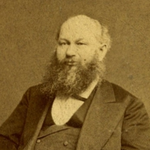 In the First Person
In the First Person
E.V. Komleva
“I Set Out to Make a Spiritual Testament”: The Last Will of Merchant M.K. Sidorov (the Second Half of the 19th Century)
The information potential of merchant spiritual wills of the 19th century is characterized by the example of the spiritual testament of the famous merchant, researcher of the Russian North and philanthropist Mikhail Konstantinovich Sidorov (1823–1887). Unlike most similar texts of the pre-reform period, the source under investigation testifies not so much to the material well-being of the author, but rather reveals his multifaceted activities in the study and economic development of the northern territories of Russia, emphasizes his patriotism and active public position. A draft version of the spiritual testament of M.K. Sidorov, deposited in his personal fond in the St. Petersburg branch of the Archive of the Russian Academy of Sciences, is published.
The work was supported by the RSF within the framework of scientific research “The Emergence and Development of the Autobiographical Tradition in the Russian Written Culture of the late 16th – early 20th Century in the Context of Studying Changes in the Consciousness of a Person of the New Age”, project No. 22-78-10135, https://rscf.ru/project/22-78-10135/
Publishing: 28/06/2024
How to cite: Komleva E.V. “I Set Out to Make a Spiritual Testament”: The Last Will of Merchant M.K. Sidorov (the Second Half of the 19th Century) // Historical Courier, 2024, No. 3 (35), pp. 268–285. [Available online: http://istkurier.ru/data/2024/ISTKURIER-2024-1-21.pdf]
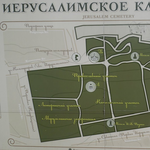 Funerary Culture
Funerary Culture
T.G. Nedzelyuk
Cemetery and Funeral Rites in the Picture of the World of Catholic Siberians (19th – 20th Centuries)
In the worldview of most religious traditions, there is an idea that prayers for the deceased, combined with certain rituals, can ensure the afterlife well-being or improve his posthumous fate. The teaching of the Catholic Church presupposes prayerful care for souls in purgatory. There are days of general commemoration, the practice of which has developed since the early Middle Ages: the Saturday before the beginning of Lent, on the eve of Pentecost, on the Day of Commemoration of all the departed faithful. The funeral rite is one of the most important elements of spiritual culture.
Publishing: 28/06/2024
How to cite: Nedzelyuk T.G. Cemetery and Funeral Rites in the Picture of the World of Catholic Siberians (19th – 20th Centuries) // Historical Courier, 2024, No. 3 (35), pp. 286–298. [Available online: http://istkurier.ru/data/2024/ISTKURIER-2024-1-22.pdf]
 Scientific Life
Scientific Life
N.V. Gonina
Scientific Seminar “Population Mortality and Health Care Development in Soviet Russia”
In the worldview of most religious traditions, there is an idea that prayers for the deceased, combined with certain rituals, can ensure the afterlife well-being or improve his posthumous fate. The teaching of the Catholic Church presupposes prayerful care for souls in purgatory. There are days of general commemoration, the practice of which has developed since the early Middle Ages: the Saturday before the beginning of Lent, on the eve of Pentecost, on the Day of Commemoration of all the departed faithful. The funeral rite is one of the most important elements of spiritual culture.
Publishing: 28/06/2024
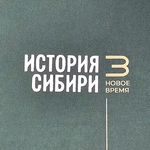 Scientific Life
Scientific Life
D.A. Ananyev
To the Publication of the Third Volume of the New Academic Publication “History of Siberia”
A brief description of the recently published third volume of “History of Siberia” (“History of Siberia. Volume 3. New Time (Late 16th – Early 20th Century”). The publication of this publication is the result of 15 years of work of the editorial board and a large team of authors. The new edition of the “History of Siberia” is designed not only to show the current level of scientific research, but also to identify the prospects for the further development of historical Siberian studies. Another important task seems to be the popularization of the accumulated scientific knowledge, bringing the results obtained by researchers to the attention of the widest reading circles both in Russia and abroad.
Publishing: 28/06/2024



